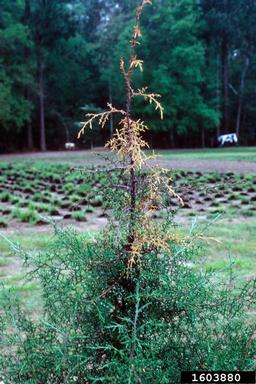The most important part of landscape disease management is identifying the problem. Eighty percent of all plant disorders are the result of the inability of a plant to adapt to its environment. Knowing the problem, whether it is stress related and/or disease related, begins with being able to correctly identify the plant.
Identify the plants that you’re growing can clue you in to what environmental extremes the plant may or may not be able to tolerate, such as full sun, shade, drought, poor drainage, freezing, etc. Many stresses can be avoided with proper planting and maintenance. A stress-free plant is often better able to tolerate disease and insect pests.
The simplest solution is often the best approach when dealing with fungal diseases in the landscape. The majority of fungicides on the market don’t provide “curative” control. In fact, most fungicides should be used preventatively and well in advance of an anticipated disease issue. Most recommendations will focus spraying fungicides on new spring growth because young, tender leaves and shoots are more susceptible to disease injury, and spring weather conditions are often ideal for fungal diseases to start — especially this year due to wet weather. Remember, once a leaf is damaged with spots or necrotic lesions, that spot is permanent until that leaf falls off the plant, no matter how much you spray. Before spraying, it is usually a good idea to prune out the worst sections and then spray to protect the rest of the plant.
The location of the disease often determines the course of action. Disease issues and general control options can be lumped into three main categories: leaf diseases, stem and branch diseases, or root and vascular diseases. Leaf diseases, such as powdery mildew and fungal leaf spots, are not generally considered lethal. Plants that are otherwise healthy can tolerate significant leaf loss and will often be able to produce new leaves either midseason or next spring. As plants approach late summer or early fall, the loss of leaves is even less of a concern on deciduous plants since they will soon lose their leaves anyway.
Leaf diseases are often considered an aesthetic issue and it’s important to understand that, although the problem may look unsightly, it should not kill your plants. It is true that leaf diseases are a stress factor, and, if compounded with other environmental stress issues over the course of multiple years, could lead to a more serious outcome. However, the cause of plant death is usually not due to a leaf disease alone, and any environmental stresses should be of greater concern.
Stem and branch diseases can often cause more permanent damage to a plant. For example, many fungal cankers and gall-forming diseases can spread to kill entire branches or, if they spread to the main trunk, may kill the entire plant. The key with stem and branch diseases is to scout susceptible plants frequently — such as for Seiridium canker on Leyland cypress — and catch the problem early. Often, the only solution is to prune out the affected portions of the plant to limit spread. Fungicides provide little help once stem or branch diseases have formed.
Root and vascular diseases such as Rhododendron wilt caused by Phytophthora, Fusarium wilt or Verticillium wilt on tomatoes are usually considered lethal diseases. These diseases kill plants either by impeding the flow of water-conducting vascular tissues inside stems or they cause roots to rot. In either case, the permanent wilt-related symptoms are the result of a fungus blocking the uptake of water. If a plant is permanently wilted and doesn’t respond to normal watering, it’s likely the result of a root-rot or vascular-stem disease. Fungicides will not cure plants infected with a vascular wilt. Often the best approach is to plant resistant varieties and to ensure plants are selected and installed according to their preference for soil moisture, sunlight, shade and drainage. With most trees and shrubs, it’s generally a good idea to plant their roots an inch or two on the high side to ensure good drainage.
Remember, the best tools for disease management are proper plant selection, good maintenance practices to minimize stress, and identifying disease problems early. A good motto to follow is “if in doubt, prune it out.” Be sure to clean pruning equipment with rubbing alcohol or a 10% bleach solution of 1 part bleach to 9 parts water when removing diseased plant material. If the problem is likely lethal to the plant and can’t be saved by pruning and minimal treatments, then apply the “if in doubt, take it out” rule to minimize spread to adjacent plants. Also, realize that some plants are inherently problematic when it comes to certain diseases — like leaf spot on red tip photinia — and an alternative plant species should be considered instead of fighting a never-ending uphill battle.
For more information and free farm, lawn or garden publications, contact your local county Extension office, which can be found at extension.uga.edu/county-offices, or visit extension.uga.edu/publications.



